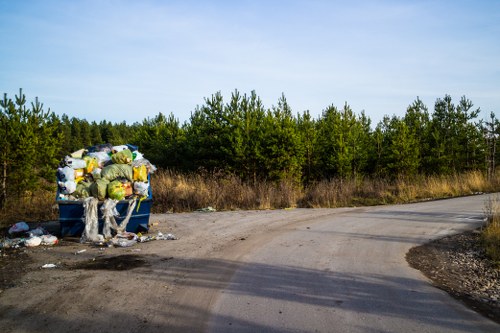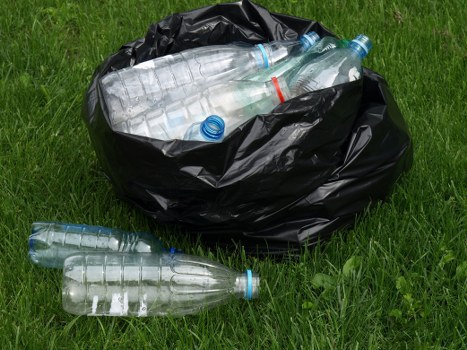Waste Removal in Mega Rubbish: Efficient Solutions for Large-Scale Cleanups
Understanding Mega Rubbish

Mega rubbish refers to large-scale waste accumulation that poses significant challenges to waste management systems. This type of rubbish often includes industrial waste, construction debris, and massive household waste generated by densely populated urban areas.
Managing mega rubbish requires specialized strategies and resources to ensure effective and environmentally responsible disposal. Without proper handling, mega rubbish can lead to severe environmental degradation and public health issues.
In recent years, the volume of mega rubbish has increased due to rapid urbanization, industrial growth, and insufficient waste management infrastructure in many regions.
The Importance of Efficient Waste Removal

Efficient waste removal is crucial for maintaining clean and healthy environments. Proper management of mega rubbish helps prevent the spread of diseases, reduces pollution, and conserves natural resources.
Moreover, effective waste removal can contribute to the economy by creating jobs in the waste management sector and promoting recycling and reuse of materials.
Neglecting waste removal can lead to various problems, including blocked waterways, air and soil pollution, and unsightly landscapes, which can deter tourism and reduce property values.
Challenges in Managing Mega Rubbish

Managing mega rubbish presents several challenges, including:
- **Logistical complexities**: Transporting large volumes of waste requires substantial infrastructure and coordination.
- **Environmental impact**: Ensuring that waste is disposed of in a manner that minimizes harm to the environment.
- **Regulatory compliance**: Navigating local, national, and international waste disposal regulations.
- **Financial constraints**: The high costs associated with large-scale waste management operations.
Addressing these challenges necessitates innovative approaches and robust planning to ensure sustainable waste management practices.
Additionally, public awareness and participation are essential in managing mega rubbish effectively.
Innovative Waste Removal Techniques

Advancements in technology have introduced various innovative techniques for waste removal, including:
- Automated Sorting Systems: Utilizing AI and robotics to efficiently sort and categorize waste materials.
- Waste-to-Energy Plants: Converting waste into usable energy through incineration or anaerobic digestion.
- Recycling Facilities: Enhancing recycling processes to recover valuable materials from waste streams.
- Bioremediation: Using microorganisms to break down and neutralize hazardous waste.
These methods not only improve the efficiency of waste removal but also promote sustainability by reducing the environmental footprint of waste management operations.
Implementing such technologies requires investment and training but offers long-term benefits in managing mega rubbish effectively.
Strategies for Effective Waste Management

Developing comprehensive waste management strategies is essential for handling mega rubbish. Key strategies include:
- Integrated Waste Management: Combining various waste treatment and disposal methods to optimize efficiency.
- Public-Private Partnerships: Collaborating with private companies to leverage expertise and resources.
- Community Engagement: Involving local communities in waste reduction and recycling initiatives.
- Regulatory Frameworks: Establishing and enforcing policies that promote responsible waste management.
These strategies ensure a coordinated effort in addressing the complexities of mega rubbish, leading to more sustainable and effective waste removal outcomes.
Furthermore, continuous monitoring and evaluation are necessary to adapt and improve waste management practices over time.
Environmental and Economic Benefits

Environmental Benefits
Efficient waste removal significantly reduces pollution levels, conserves natural resources, and mitigates the effects of climate change by lowering greenhouse gas emissions from waste decomposition.
Conservation of Resources: Recycling and reusing materials minimize the need for extracting new raw materials, thereby preserving ecosystems and reducing habitat destruction.
Economic Benefits
Effective waste management generates economic opportunities through job creation in sectors such as recycling, transportation, and waste processing. Additionally, it reduces healthcare costs associated with pollution-related diseases and environmental degradation.
Cost Savings: Proper waste management can lead to significant cost savings for municipalities and businesses by reducing the expenses related to landfill use and environmental cleanup.
Case Studies: Successful Mega Rubbish Removal

Singapore’s Zero Waste Strategy
Singapore has implemented an ambitious zero-waste strategy that focuses on reducing, reusing, and recycling waste. The country's comprehensive approach includes strict regulations, public education campaigns, and investment in advanced waste processing technologies.
This strategy has significantly decreased the volume of waste sent to landfills and increased recycling rates, making Singapore a model for effective mega rubbish management.
San Francisco’s Recycling Revolution
San Francisco has achieved impressive results through its mandatory recycling and composting programs. By enforcing strict waste separation rules and providing residents with convenient recycling facilities, the city has diverted over 80% of its waste from landfills.
This success demonstrates the impact of strong policies and community involvement in managing large-scale waste effectively.
Technological Innovations in Waste Removal

Smart Waste Collection Systems
Smart waste collection systems use sensors and IoT technology to monitor waste levels in real-time. This enables optimized collection routes, reducing fuel consumption and operational costs while ensuring timely waste removal.
Such systems enhance the efficiency of waste management operations, particularly in handling mega rubbish where large volumes need to be managed seamlessly.
Advanced Recycling Technologies
Innovations in recycling technologies, such as chemical recycling and automated sorting, have improved the ability to process and recover materials from complex waste streams. These advancements increase the purity and quality of recycled materials, making them more marketable and reducing reliance on virgin resources.
By adopting these technologies, waste management facilities can handle larger volumes of mega rubbish more effectively and sustainably.
Future Trends in Waste Removal

Circular Economy
The concept of a circular economy emphasizes designing out waste and keeping materials in use for as long as possible. By shifting towards circularity, waste removal practices can become more sustainable and economically beneficial.
In a circular economy, products are designed for durability, reuse, and recyclability, significantly reducing the generation of mega rubbish.
Zero Waste Cities
The zero waste movement aims to create cities where all waste is reused, recycled, or composted, leaving no room for landfills. This ambitious goal requires comprehensive planning, community engagement, and continuous innovation in waste management practices.
Several cities worldwide are adopting zero waste initiatives, setting the stage for future advancements in waste removal and management.
Implementing Effective Waste Removal Solutions

Assessment and Planning
Successful waste removal begins with thorough assessment and strategic planning. This includes evaluating the types and volumes of waste, identifying suitable disposal methods, and allocating resources effectively.
Developing a detailed waste management plan ensures that all aspects of mega rubbish removal are addressed systematically.
Collaboration and Partnerships
Collaboration between government entities, private companies, and communities is essential for the successful implementation of waste removal solutions. Partnerships can provide the necessary expertise, technology, and financial support to manage mega rubbish effectively.
Engaging stakeholders at all levels fosters a unified approach to tackling waste management challenges.
Role of Government and Legislation

Government policies and legislation play a pivotal role in shaping waste removal practices. By enacting laws that mandate recycling, set waste reduction targets, and regulate disposal methods, governments can drive significant improvements in waste management.
Incentives for businesses and individuals to adopt sustainable practices also contribute to more effective mega rubbish removal.
Furthermore, regulatory frameworks ensure that waste disposal is conducted responsibly, safeguarding environmental and public health.
Community Involvement and Education

Community involvement is crucial for the success of waste removal initiatives. Educating the public about the importance of waste reduction, recycling, and proper disposal encourages responsible behavior and participation in waste management programs.
Engaging communities through awareness campaigns, workshops, and volunteer opportunities fosters a culture of sustainability and collective responsibility.
Empowered communities are more likely to support and contribute to effective mega rubbish removal efforts.
Conclusion: Moving Towards Sustainable Waste Management

Waste removal in mega rubbish is a complex yet manageable challenge that requires a multifaceted approach. By leveraging technological innovations, implementing effective strategies, fostering collaboration, and engaging communities, it is possible to achieve sustainable and efficient waste management.
As urban populations continue to grow, the importance of addressing mega rubbish becomes increasingly critical. Investing in robust waste removal systems today will ensure a cleaner, healthier, and more sustainable future for generations to come.
Contact us today to learn more about our comprehensive waste removal services and how we can help your community manage mega rubbish effectively.